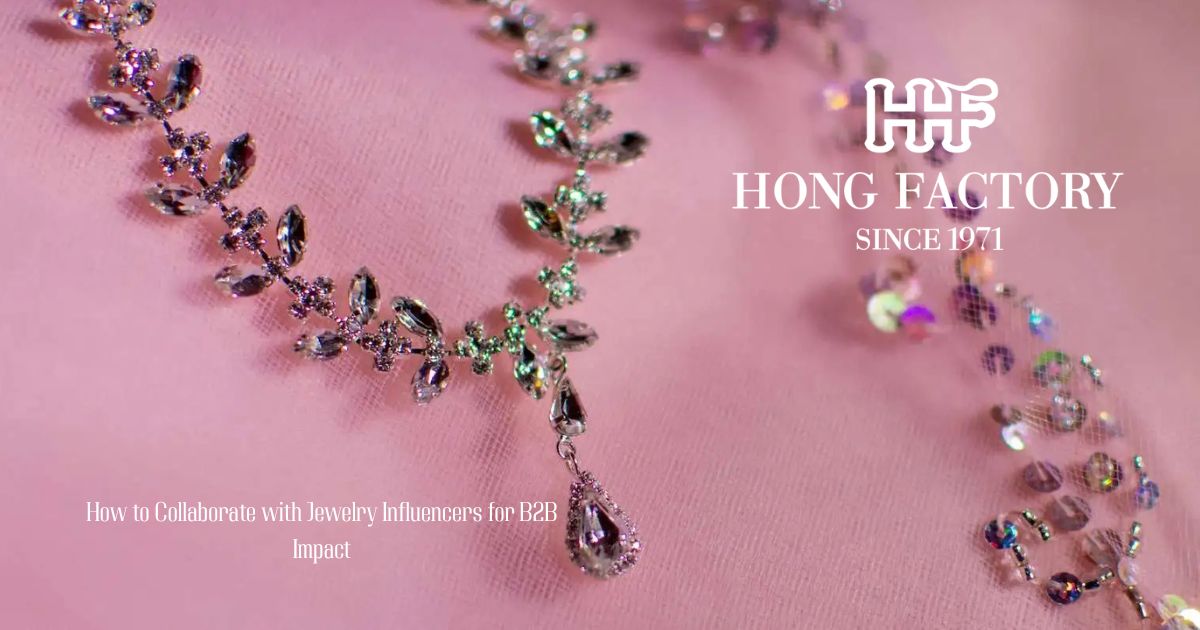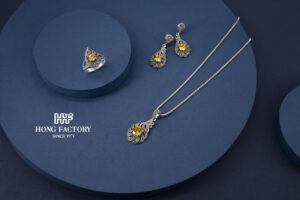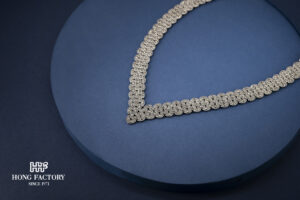In the world of B2B jewelry marketing, influencer collaboration is no longer just for consumer brands. With the rise of digital platforms and niche creator communities, strategic partnerships with jewelry influencers can generate awareness, credibility, and lead generation—not just among consumers but also among retailers, boutique buyers, and wholesale distributors.
Here’s how jewelry manufacturers, wholesalers, and private label brands can leverage influencer collaborations to make a meaningful B2B impact.
How to Collaborate with Jewelry Influencers for B2B Impact

Why Influencer Marketing Matters in B2B Jewelry
While B2C influencers help sell directly to end users, B2B influencer collaborations focus on increasing visibility within the industry, building buyer confidence, and opening up partnership opportunities.
Key Benefits:
- Showcase product design and quality through trusted voices
- Build brand authority and credibility in trade communities
- Attract potential B2B buyers by demonstrating real-world styling and usage
- Encourage content sharing at trade shows, on LinkedIn, or in digital catalogs
Step 1: Define Your B2B Goals Clearly
Before engaging any influencer, be clear about your business objectives.
Common B2B influencer goals:
- Generate leads from boutique retailers or distributors
- Build awareness ahead of trade shows or product launches
- Position your brand as an OEM/private label partner
- Showcase seasonal or ready-stock collections to potential buyers
Align your influencer efforts with marketing campaigns or product timelines.
Step 2: Identify the Right Influencers for B2B
Not every fashion influencer is suited for B2B goals. Instead, look for influencers who:
Ideal Influencer Types:
- Are respected in the jewelry, design, or artisan space
- Collaborate with retail buyers, stylists, or boutique founders
- Create high-quality content featuring styling, process, or craftsmanship
- Have followings on LinkedIn, YouTube, Pinterest, or niche trade platforms
Tip: Micro-influencers (5K–50K followers) often have higher engagement and niche authority.
Step 3: Develop a Collaboration Structure That Serves Both Sides
Design a campaign that supports your B2B goals while offering real value to the influencer.
Campaign Ideas:
- Behind-the-scenes factory tour or craftsmanship spotlight
- Influencer-designed capsule collection (great for OEM brands)
- Trade show takeover (Instagram Stories, booth previews)
- Unboxing and styling with B2B messaging: “Perfect for boutique buyers”
Value exchange: Offer professional photography, custom pieces, early access, or affiliate commissions.
Step 4: Create Messaging That Resonates with B2B Audiences
The tone and content of influencer posts should speak to wholesale buyers, not just retail consumers.
Sample Messaging Angles:
- “These pieces are part of a ready-stock line available for boutique orders”
- “Designed for retailers looking for lightweight summer jewelry with fast turnaround”
- “Ethically made in Thailand minimum order just 5 pieces per style”
Content Types:
- Styling reels with wholesale order captions
- Informational carousels about the OEM or made-to-order process
- Direct call-outs to B2B benefits: MOQs, catalogs, production timelines
Step 5: Track Engagement, Leads, and B2B Conversions
Influencer ROI in B2B isn’t always about sales it’s about relationship-building and pipeline growth.
Trackable KPIs:
- Number of catalog requests or inquiry form submissions
- Direct messages from retail buyers
- Mentions or shares by trade media or retailers
- Email list growth from influencer landing pages
Use UTM codes, QR links, or custom contact forms to trace performance.
Step 6: Amplify Influencer Content Across B2B Channels
Don’t let the content live only on the influencer’s feed. Repurpose it to maximize exposure.
Where to Repurpose:
- LinkedIn posts for trade visibility
- Wholesale catalogs and digital brochures
- Email campaigns targeting buyer lists
- Exhibitor pages for trade shows
- Press kits and pitch decks
Reminder: Always get usage rights to reuse influencer content in commercial contexts.
Step 7: Build Long-Term Influencer Partnerships
One-off collaborations can help, but long-term relationships create stronger brand alignment and deeper reach.
How to Build Loyalty:
- Involve influencers in product development or naming
- Invite them to company events or showroom previews
- Provide regular updates on how their content impacts B2B growth
Strong partnerships turn influencers into brand advocates—making every post feel authentic and aligned.
Common Pitfalls to Avoid
- Choosing influencers only for follower count rather than B2B relevance
- Lack of clear objectives or campaign structure
- Forgetting to include wholesale info in content messaging
- Failing to measure B2B-specific outcomes like catalog downloads or inquiries
Influence Beyond the Consumer
Jewelry influencer marketing isn’t just for Instagram glam—it’s a powerful B2B tool when done strategically. By aligning your collaborations with wholesale goals, choosing the right voices, and crafting content that speaks to retailers and resellers, you position your brand for deeper industry influence.
In 2025, the brands that thrive won’t just sparkle in a social feed they’ll be the ones that build real connections across the supply chain.
Because in B2B jewelry, relationships



